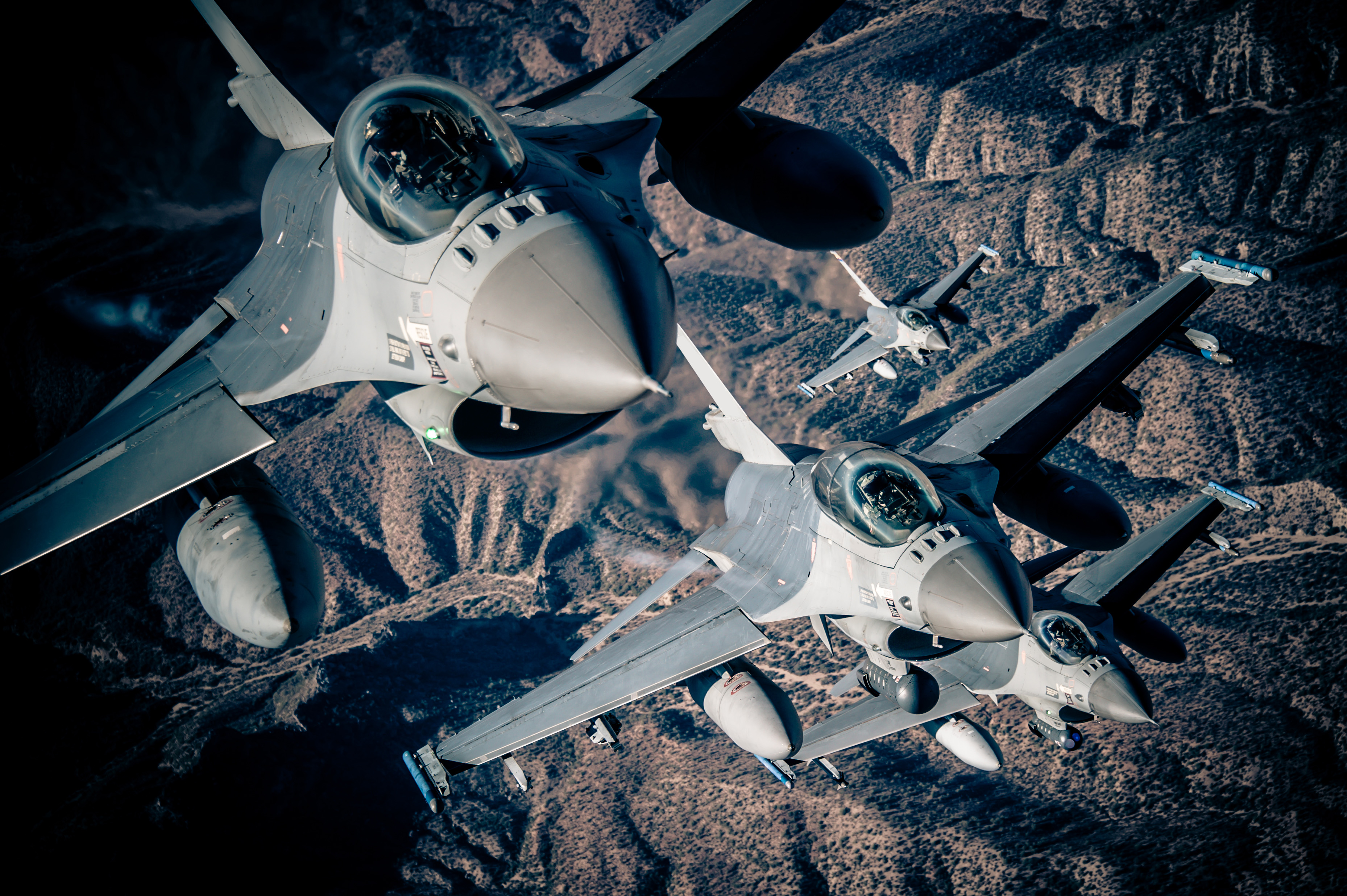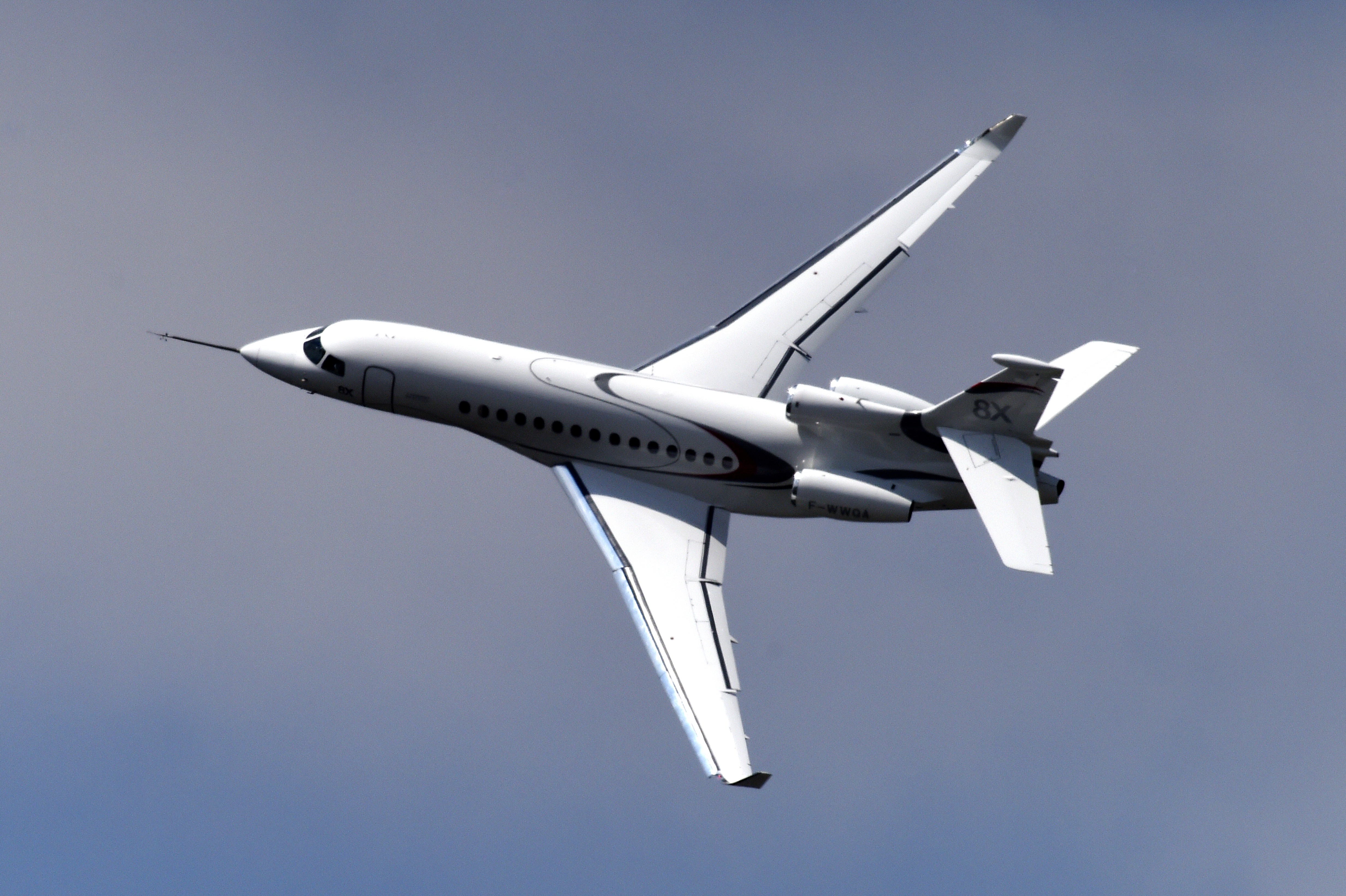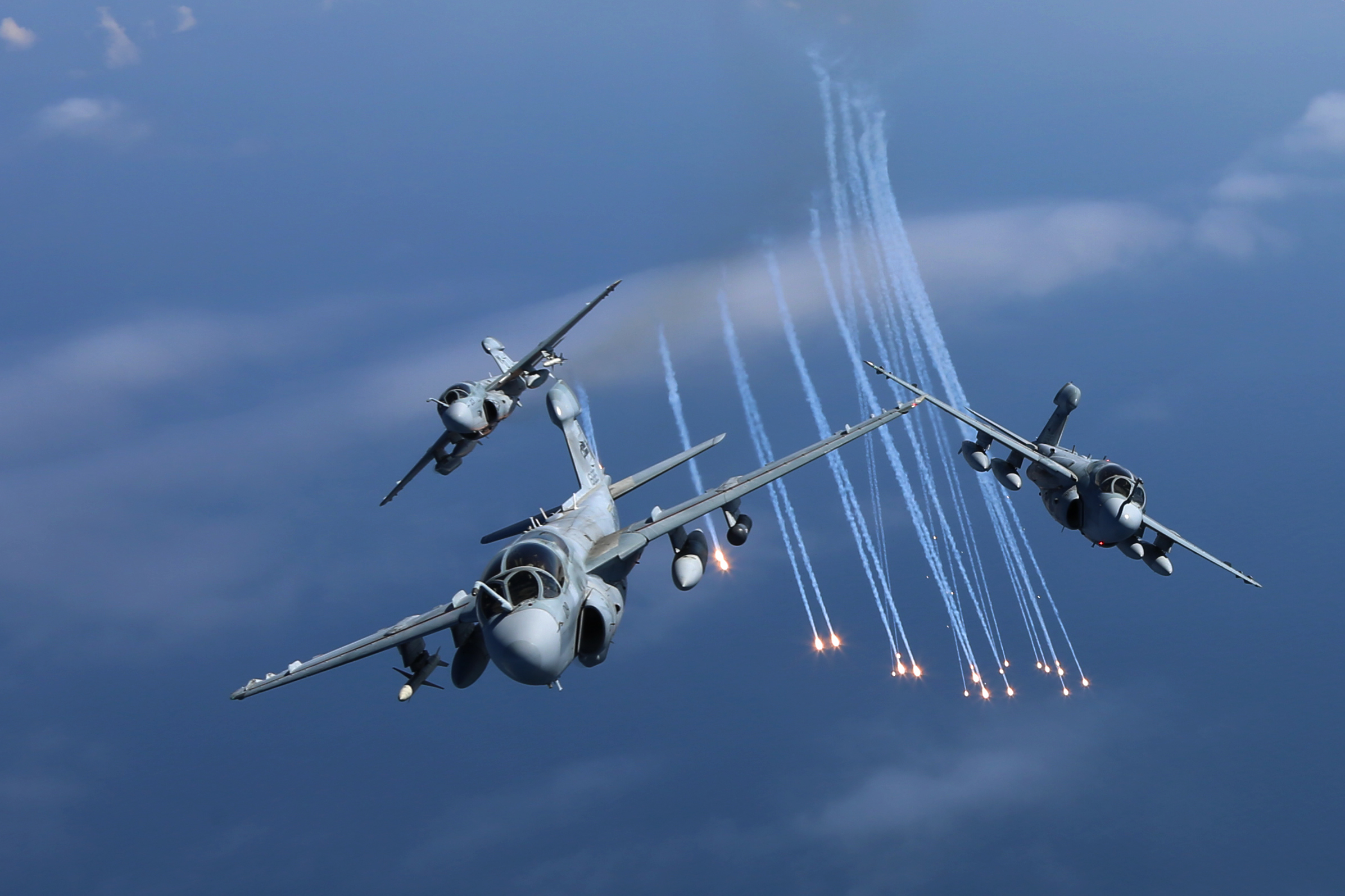What Is Electronic Warfare Aircraft - The EC-37B Compass Call electronic warfare (EW) aircraft is being developed to provide enhanced electronic warfare capabilities to the United States Air Force (USAF) based on the Gulfstream G550 business aircraft.
The new platform is based on the Gulfstream G550 Airborne Early Warning Aircraft (CAEW), a derivative of the G550 business aircraft. It is equipped with the existing Compass Call warfare system installed on the aging Lockheed Martin EC-130H Compass Call warfare aircraft.
What Is Electronic Warfare Aircraft

The EC-37B Compass Call aircraft is expected to provide the US Air Force with improved jamming capabilities compared to the current EC-130H Compass Call aircraft, which has been in service with the US Air Force since 1982.
France Hires Two Firms To Soup Up Jets With An Electronic Warfare Capability
The US Air Force plans to acquire ten EC-37B Compass Call aircraft to replace its fleet of 14 EC-130H aircraft. The first two EC-37Bs are expected to reach first operational readiness by 2023.
The EC-37B Compass Call aircraft is delivered to the 55th Electronic Combat Group (ECG) based at Davis-Monthan Air Force Base in Tucson, Arizona. 55. ECG is the sole operator of Compass Call aircraft in emergencies worldwide.
The USAF announced its proposal to retire the current EC-130H Compass Call aircraft in 2014. The National Defense Authorization Act (NDAA) for fiscal year 2016 directed the USAF to submit a report on the recapitalization of its EC-130H Compass Call aircraft fleet. Respond to future threats either with a replacement program or by installing Compass Call features on an existing platform.
In October 2015, the Air Force issued a request to aircraft manufacturers for information on their ability to offer commercial derivative aircraft integrated with the Compass Call system.
L3 To Deliver Electronic Warfare Aircraft To Australia With Next Generation Capability
In early 2016, the USAF stated that future EW capabilities could be addressed by transferring the current Compass Call mission system to a derivative commercial aircraft based on responses provided by Boeing, Bombardier, and Gulfstream Aerospace.
In August 2016, the US Air Force released a classified rationale and authorization for a sole source contract to re-host Compass Call with L3Harris Technologies (L3Harris), formerly known as L3 Communications. They have announced plans to replace the EC-X Compass Call. aircraft under the Compass Call Cross Deck program in 2017.
L3Harris was awarded a contract by the US Air Force in April 2017 as the prime contractor to integrate Compass Call EW technology into the Gulfstream G550 CAEW airframe. In September 2017, Gulfstream Aerospace received the right to supply Gulfstream G550 CAEW airframes.

BAE Systems is responsible for the development, procurement, manufacture and integration of electronics and combat equipment for the EC-37B Compass Call EW fleet.
Rare Russian Electronic Warfare Planes Intercepted By Nato Aircraft
A preliminary analysis of the design of the Compass Call weapon system was completed in 2017, and work to transfer the Compass Call EW technology from the EC-130H aircraft to a modern platform began in July 2018.
L3Harris announced the completion of the first flight of the Compass Call aircraft in October 2021. BAE Systems partnered with the US Air Force to successfully test the Small Adaptive Bank of Electronic Resources (SABER) technology on the EC-37B Compass Call in April 2021. The tests were conducted at Davis-Monthan Air Force Base in Arizona.
The design provides flexibility that supports the addition of new features in the future to meet changing mission requirements. The EC-37B is 29 m long and has a wingspan of 28 m. It is equipped with two Rolls-Royce BR710 C4-11 engines. Aircraft weight and operating costs are reduced by 50% compared to the EC-130H Compass Call.
It is integrated with the modern tactical weapon system Compass Call, which ensures high efficiency in the execution of missions while ensuring the survival of pilots and operators.
Australia Set To Become One Of The World's Top Aerial Electronic Warfare Powers
The new platform's avionics include an improved cockpit, advanced electronics and communications package, jammers, data link, tactical radios, and transmit and receive antennas.
The new EC-37B electronic warfare platform is used to disrupt enemy command and control communications and suppress enemy air defense networks. It is also used to attack enemy early warning and radar threat targets and for counterintelligence operations.
The new EW aircraft can operate at high altitudes at higher speeds and perform missions over long distances. He is also capable of performing missions under conditions of denial of access, zone blockade and irregular hostilities.

SABER Technology SABER technology transforms an earlier hardware EW system into a software-based electromagnetic spectrum warfare capability for the EC-37B Compass Call. It contains several software-defined radios. The system has an open architecture and supports the EC-37B aircraft operating system. Electronic Warfare (EW) is the ability to use the electromagnetic spectrum – signals such as radio, infrared or radar – for detection, defense and communications. At the same time, electronic warfare can disrupt, deprive, and reduce the ability of adversaries to use these signals.
Ec 37b Compass Call Electronic Warfare Aircraft, Us
Lockheed Martin creates systems that help the US Navy safely patrol and protect the seas. We deliver proven technology and capabilities that provide real-time situational awareness, enabling the US Navy to intercept signals that identify both immediate and potential threats. These countermeasure technologies use electronic warfare to protect ships from ship-to-ship missile attacks.
Lockheed Martin provides ground-based EW solutions to the US military, its allies, coalitions and partner nations through a unique next-generation open architecture product platform and open business model. Our multi-tasking/multi-use capabilities are based on Symphony's Improvised Explosive Device (C-IED) suppression system. Since its initial deployment in 2006, more than 4,000 Symphony C-IED systems have been delivered and are currently used to support US and partner coalition military fighters.
Lockheed Martin's knowledge of airborne defense extends far beyond platform development. We have deployed the aircraft's electronic warfare systems, including electronic support tools (ESM), radar warning receiver (RWR), electronic intelligence, communications intelligence and anti-jamming GPS products.
Lockheed Martin provides a full range of offensive and defensive capabilities across the electromagnetic spectrum using cyber solutions and electronic warfare systems. Using cross-domain technology and open architecture design, we provide full mission support to manage the new era of integrated cyber warfare. Three EA-6B Prowlers from each Prowler squadron at Marine Corps Air Station Cherry Point led the final four. The division's flight to the airport on March 1, 2016. US Marine Corps photo
Visiting The Prowler: Usmc Electronic Warfare Capabilities In Transition
President-elect Donald Trump has called for serious initiatives to be included in his first 100 days to make America strong again. We hope that these efforts will include some reasonable and affordable changes to the Ground Expeditionary Electronic Warfare Force (EWF) that will immediately increase operational readiness and also have a positive financial impact.
These changes will delay, if not reverse, the premature retirement of Marine EW aircraft; maintaining a highly qualified flight crew; and the geographic realignment of the Navy's expeditionary force. These are proactive changes in force composition that imply a higher priority for combat readiness without increased overseas deployment.
As combatant commanders know—and respect our adversaries—these are the front lines they call upon to support warfighters engaged in operations across the spectrum of conflicts. EW aircraft and their powerful electronic attack systems were originally designed to counter complex air defense systems, but now support ground forces and special operations forces engaged in conventional and asymmetric warfare. These versatile assets are fully integrated into the command and control architecture to provide commanders with unparalleled situational awareness and targeting for battle management decisions. With an ever-evolving array of offensive EW capabilities now extending into PSYOPS and cyber warfare, they are well-equipped to wreak havoc, according to the strategy of the retired Secretary of Defense nominee. James Mattis.

An E/A-18G Growler heads toward a catapult on the flight deck of the aircraft carrier USS Theodore Roosevelt (CVN-71). US Navy photo
Northrop Grumman Ea 6b Prowler
Today, EW forces could have to counter IEDs and communications equipment used by ISIS and the Taliban, or target Russian-supplied surface-to-air missile systems in Syria that they might have to suppress later. In the Pacific, they are ready to engage advanced Chinese air defense systems protecting artificial islands as part of their anti-access/area denial (A2/AD) strategy.
After the US Air Force EF-111 was retired in the mid-1990s, the EW expeditionary force was assigned to the Navy and Marine Corps. This meant that the Navy began to carry out the mission that the Marine Corps had begun during the Vietnam War and was separated from the Persian Gulf and Balkan campaigns. For years, both services have operated the EA-6B Prowler, which was originally designed to counter integrated air defense networks but was quickly modified during the Iraq War to provide direct support to US and coalition ground and special operations forces. This effort came just in time for the Prowlers to support the Marines who fought in the bloody battle of Fallujah in 2004.
The Navy is now retiring its EA-6Bs and transitioning the carrier and reconnaissance squadrons to the EA-18G Growler, a hybrid version of the F/A-18 Super Hornet. The fleet's expeditionary squadrons are not yet ready, about 40 new production EA-18Gs have yet to be delivered. All expeditionary and transport squadrons are flown home to NAS Whidbey Island, WA.
Moving away from the Navy's aircraft modernization strategy, the Marine Corps decided a few years ago to retire the Super Hornet and Growler and wait for the aircraft to evolve.
Electronic Warfare Aircraft Ef 111 \
Us air force electronic warfare aircraft, electronic warfare, us electronic warfare aircraft, what is electronic warfare in the army, best electronic warfare aircraft, aircraft electronic, navy electronic warfare aircraft, air force electronic warfare aircraft, russian electronic warfare aircraft, electronic warfare aircraft, usaf electronic warfare aircraft, what is electronic warfare
0 Comments